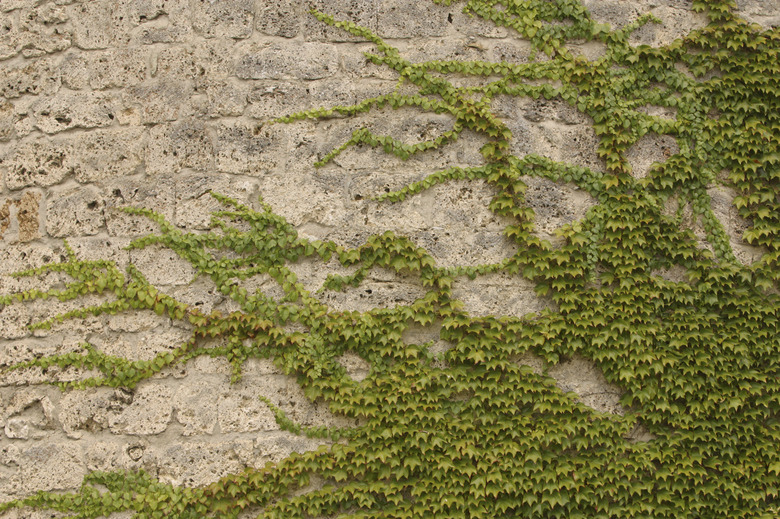Fast-Growing Ivy For Climbing A Brick Wall
Nothing covers a formerly bare surface more quickly or gracefully than ivy. Climbing ivies not only provide a fast way to improve a brick wall's looks, they are tolerant and undemanding, leaving you free to take care of the many other tasks that occupy your time.
Boston Ivy
Step 1
Famous for its association with the prestigious schools back east, Boston ivy (Parthenocissus tricuspidata) will climb and cover brick surfaces at a rate of 10 feet per year, topping out around 50 feet. It sticks to surfaces with adhesive pads that develop on the end of small tendrils growing out of the vine. During the growing season its deciduous leaves are green, with spectacular purple and crimson fall color, but in the winter months its vines are bare. It is hardy in U.S. Department of Agriculture plant hardiness zones 4 through 8.
Virginia Creeper
Step 1
Native to the eastern United States and parts of Mexico, Virginia creeper (Parthenocissus quinquefolia) is one of the hardiest climbing vines, growing well in USDA zones 3 through 9. It also has a bright fall display, its leaves turning brilliant shades of red, orange and gold. Like Boston ivy, it can grow as quickly as 10 feet per year, is quite tolerant and uses adhesion to cling to walls.
- Nothing covers a formerly bare surface more quickly or gracefully than ivy.
- Native to the eastern United States and parts of Mexico, Virginia creeper (Parthenocissus quinquefolia) is one of the hardiest climbing vines, growing well in USDA zones 3 through 9.
English Ivy
Step 1
Moisture- and shade-loving English ivy (Hedera helix) has evergreen leaves year-round and can grow to 80 feet. It is hardy in USDA zones 4 through 9 and grows at a rate of roughly three feet per year. English ivy clings to walls by boring into them with small roots. Over extended periods of time, this may let in water and encourage mold or rot, but in the short term it shouldn't be a big deal. English ivy can also be invasive if allowed to grow freely, so confine it to its planting bed or try one of its numerous cultivars, many of which are less invasive than the species plant.
Algerian Ivy
Step 1
Closely related to English ivy, Algerian ivy (Hedera canariensis or H. algeriensis) is hardy in USDA zone 7 and above. It is an evergreen vine that grows moderately rapidly, but tops out at around 30 feet. If you live in a colder area, Algerian ivy's leaves may turn a bronze color in winter. As with English ivy, watch out for invasive tendencies.
- Moisture- and shade-loving English ivy (Hedera helix) has evergreen leaves year-round and can grow to 80 feet.
